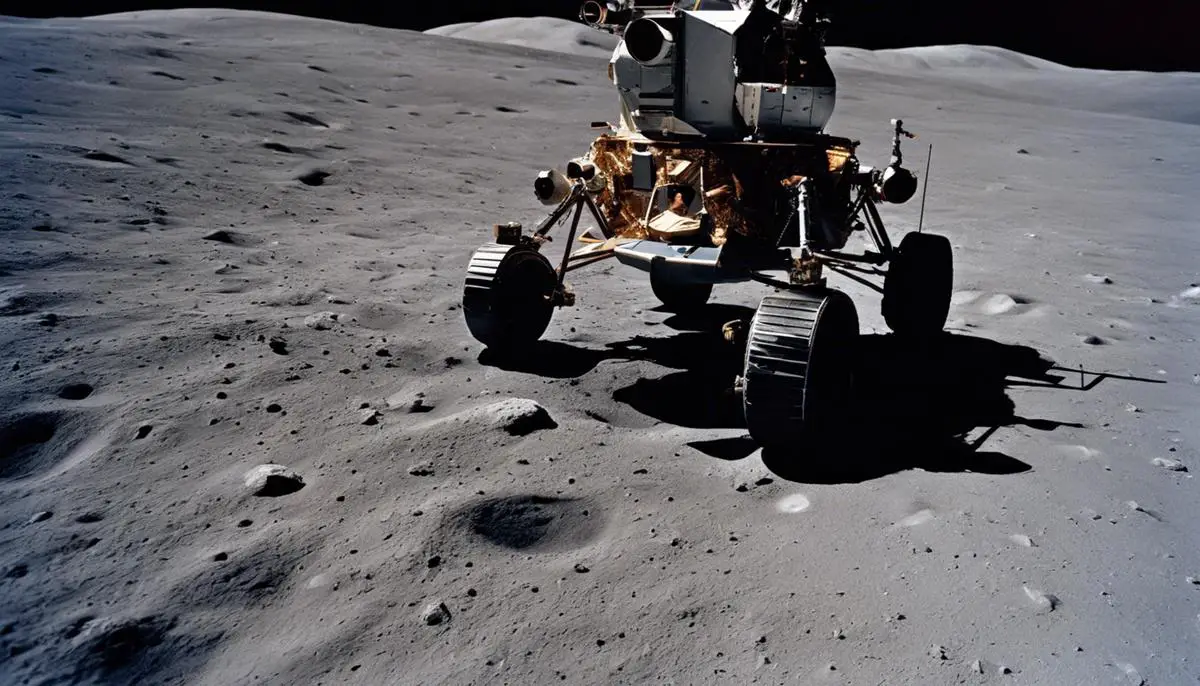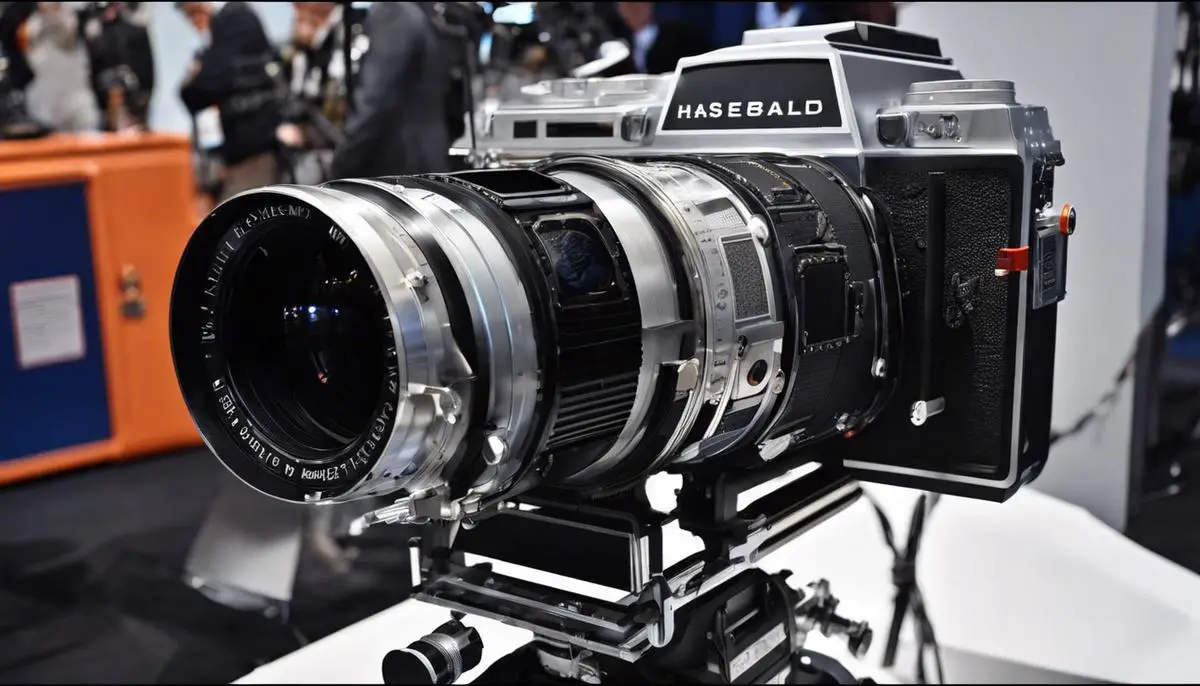Embarking on a celestial voyage into the profound depths of space, the Apollo 17 mission bestowed upon humanity an armory of awe-inspiring, evocative images that unveiled the clandestine realm of our cosmic neighbor – The Moon. rendering us privy to its desolate beauty and ethereal charm. Scratch the surface, and you’ll find that these photographs, emanating from 238,855 miles away, impart a resonance far beyond their aesthetic appeal. As technological marvels, they required engineering genius and innovative solutions to the countless obstacles presented by the grueling lunar environment. Beyond simple documentation, these pictures have served as a cornerstone in understanding the enigmatic realms of lunar geology, illuminating our grasp on extraterrestrial landscapes. These images also ignited unprecedented public fascination with space exploration, establishing a photographic legacy that continues to inspire and educate.
Contents
Technical aspects of capturing the photos
The Technical Challenges Encountered During the Photographic Documentation of the Apollo 17 Mission
Apollo 17, the final mission of NASA’s Apollo program, represents a crucial milestone in the annals of space exploration. Integral to this mission’s contribution to mankind’s spacefaring endeavors was the wealth of photographic documentation gathered, despite the multitude of technical challenges. The successful resolution of these hurdles underscores the profound reverence engineers and astronauts have for the mysteries of the cosmos and the keen determination to push the frontiers of knowledge.
A close examination of the mission’s photographic documentation reveals a myriad of fascinating insights into the technical dilemmas that were surmounted by the dedicated Apollo 17 team. The primary challenge was perhaps weighing the potential scientific value of photographs against the load restrictions of the Apollo spacecraft. This necessitated employing cameras and film with the consideration of their weight, durability, and functionality in the harsh lunar environment.
The Hasselblad Electric Camera (HEC), customized for lunar missions, notably embodied the painstaking effort to balance these factors. Its intricate engineering enabled astronauts Eugene Cernan and Harrison Schmitt to photograph the lunar surface in remarkable detail. However, significant modifications were implemented to resolve power consumption issues and facilitate user-friendliness whilst wearing cumbersome space-suits.
Alongside electricity consumption, temperature control posed a formidable challenge. Outer space presents a tumultuous dichotomy of extreme temperatures, with the lunar surface alternating between scorching heat and extreme cold. Innovative thermal protection was imperative to safeguard the camera and the delicate photographic film enclosed within.
Another challenge lay in selecting film ideal for capturing the broad spectrum of lunar illumination. The native contrast of lunar terrain, a direct sunlight condition coupled with the sheer blackness of space, cast an unpredictable palette that conventional films could not effectively reproduce. Ultimately, a film with advanced capabilities was employed, capable of coping with the tonal range of the lunar landscape.
One must not overlook the operational difficulties that the astronauts grappled with. Navigating the lunar surface, donned in claustrophobic space-suits and oversized gloves, while managing complex photographic gear, was no small feat. The omni-present vacuum of space permitted no room for error or equipment malfunction.
Astoundingly, despite these substantial technical obstacles, the Apollo 17 mission was extraordinarily successful. The photographic renditions it produced are a testament to the dedication and ingenuity of countless individuals, their collective fervor etched into each pixel. Looking more closely at these images, one can not only apprehend the moon’s rugged visage, but also perceive the unwavering resolve of human innovation and the relentless pursuit of knowledge inherent in the field of space exploration. Indeed, an eternal, silent ode to the indomitable human spirit, and an enduring testimony to the technical challenges that were triumphed over then, as they are sure to be in the future.

Interpretation of the photographs
Images furnished by Apollo 17 are not mere historical artifacts; they remain crucial for illuminating aspects of lunar geology and guiding the endeavors of space exploration. Delving into these images grants flourishing insights into lunar rock characteristics, structures, and processes, while concurrently forecasting some of the hurdles to anticipate in future lunar and other space explorations.
Photographs captured by the Apollo 17 crew serve as an invaluable resource to probe into the fascinating field of lunar geology. They cast light on crucial aspects of lunar surface properties such as its dustiness, brightness, and roughness. The latter, in particular, is paramount in the study of lunar impact cratering, a topic subjected to fervent scientific scrutiny. Images spotlighting the undulating landscape, strewn with boulders of varying sizes, have persistently challenged preconceived notions about lunar surface formation, stirring ongoing discourse on the attribution of these formations to primary impact, secondary impact, or volcanic processes.
Furthermore, high-definition close-ups of lunar rock samples, such as the one known as “Troctolite 76535,” proved instrumental. With a granular look at individual mineral grains, discernible even through the thick dust layer, these images bootstrap our understanding of the moon’s interior and its thermal history. They help cement knowledge about the high-pressure, high-temperature environment within the Moon, vital information for those drawn into the mysteries of lunar formation and evolution.
Apollo 17 still-life captures not only supplement scientific knowledge but also inspire innovation in lunar probe designs. These images provide the bedrock for ground truth for a variety of remote sensing data, which serves as a cornerstone for the design and testing of lunar rovers. The precision captured in Apollo 17’s photographs has been instrumental in calibrating the scientific instruments of these robotic extenders of human reach, a practice that continues to shape the design and operation of these rovers today.
In addition, the imperative of human presence in Lunar missions is accentuated. Harnessing the nuanced observation capabilities of astronauts fused with sophisticated imaging technology unravels a synergistic outcome. Astronauts’ cognition in identifying interesting geological features, quickly adapting to taking images under varying light conditions, and adjusting camera settings on the fly, all contribute to the exceptional caliber of these archives.
These images go beyond being a mere testament to human achievement. They breathe life into the lunar landscape, transforming our understanding of our natural satellite’s geology and providing invaluable data for future space exploration, rooted in the reality of experience. As the subtleties of these images continue to harvest insights under careful examination, we contemplate a vibrant future of space exploration—one where every pixel could unlock a universe of knowledge. Apollo 17’s legacy is an open-ended invitation onto this realm of discoveries.

Legacy and implications of the photographs
Emerging from the exceptional Apollo 17 mission are the 2,242 photographs that collaboratively serve as a visual journey, capturing the gargantuan effort and scientific prowess that propelled the era of space exploration. They are not merely froze-framed remnants of space history, but functioning tools that continue to influence contemporary space research and public perception alike.
Take, for example, the profound insights these images offer into lunar geology. Meticulous analysis of the photographs has allowed researchers to determine the critical structure, texture, and mineral orientation of lunar rock formations. This limelight shed on lunar geology acts as a cornerstone for postulation and hypotheses surrounding the geological history of comparable extra-terrestrial bodies, such as Mars and the moons of Jupiter and Saturn.
Simultaneously, these photographs have also outlined the physical properties of the lunar surface. By examining the brightness, dustiness, and overall terrain as illuminated in the images, scientists can investigate how solar radiation interacts with the Moon’s regolith. Notably, these insights have been significant in addressing challenges associated with lunar landing scenarios, dust contamination, and lunar surface operations for future missions – real issues that NASA’s Artemis program is poised to encounter.
On another note, the imprint of impact craters captured in these images has prompted a reevaluation of theories about lunar surface formation. Nested within the debate between volcanic activity versus meteoroid or cometary impact as the source of these structures are the Apollo 17 images. The high-definition images captured by astronauts indeed played a role in reshaping the scientific establishment’s appreciation of lunar cratering processes.
Importantly, enterprises of space exploration continue to engage with Apollo 17 images to design, develop, and test next-generation lunar probes. By juxtaposing captured images with telemetry and operational data from these missions, strategists improve the algorithm of autonomous systems integral to ongoing robotic lunar rovers.
Another profound influence derived from Apollo 17 images is the reinforcement of human presence in space missions. Astronauts’ ability to adapt and capture minute variations in lunar conditions that automatic rovers might miss marks a compelling case for human-crewed missions. Examining these differences informs the design of future telescopes, probes, and manned explorations.
Moreover, the transformative nature of Apollo 17 images holds distinct value for future missions. They are repositories of data for future generations, observational benchmarks that guide and support forthcoming lunar or Martian expeditions. They act as a compass, aligning newer projects and explorations to ensure that scientific curiosity reaps rewarding results.
The enduring legacy of Apollo 17 lives on in every pixel of these images. Their continued impact on space exploration resonates in the hearts of dreamers and doers who are pushing the boundaries of human achievement. The images truly embody the remarkable interlacing of human curiosity, scientific rigor, and pioneering innovation, thereby galvanizing further interest and support for the exploration of the final frontier.
It is essential not just for scientists working within the sphere of space and astrophysics but also for those beyond it to understand the full breadth of these influences. As we collectively stride toward an era of renewed lunar exploration and look hopefully toward Mars, the lessons we take with us from the Apollo 17 images will prove a treasured source of inspiration and practical guidance.

Apollo 17 mission’s photographs architect an enduring legacy entrenched in our collective consciousness transcending the realms of science and into the spheres of culture, art, and public imagination. Having tackled unprecedented engineering challenges, these images symbolize humanity’s triumph over the unknown and serve as the testament of mankind’s untameable curiosity and ceaseless exploration. Culminating in substantial technological advancements, enriching our scientific comprehension, fuelling future interstellar quests and igniting the embers of public fascination, these photographs remain a pivotal connection between the earth and the moon. As we look ahead to an era of renewed lunar expeditions, the photographic stories from Apollo 17 resonate with timeless relevance, reminding us of the great leaps we’ve made and encouraging us for the celestial bounds we’re yet to travel.
